Introduction
The Hyundai IONIQ 9 is big - really big! This seven-seater SUV is Hyundai’s largest vehicle to date, at over 5.0-metres long, and is clearly designed with space and practicality in mind. We’ve already had one very large car from Hyundai Motor Group—the current World Car of the Year, the Kia EV9. We love this car at Electrifying.com, and we’re expecting big things from its Hyundai sibling. The IONIQ 9 is the kind of car that will feel right at home on wide American highways but is still engineered to fit on British roads. It slots in at the top of Hyundai’s IONIQ electric lineup, going up against the likes of the Kia EV9, the Volvo EX90, BMW iX and the (slightly smaller, slightly less plush) Peugeot E-5008.
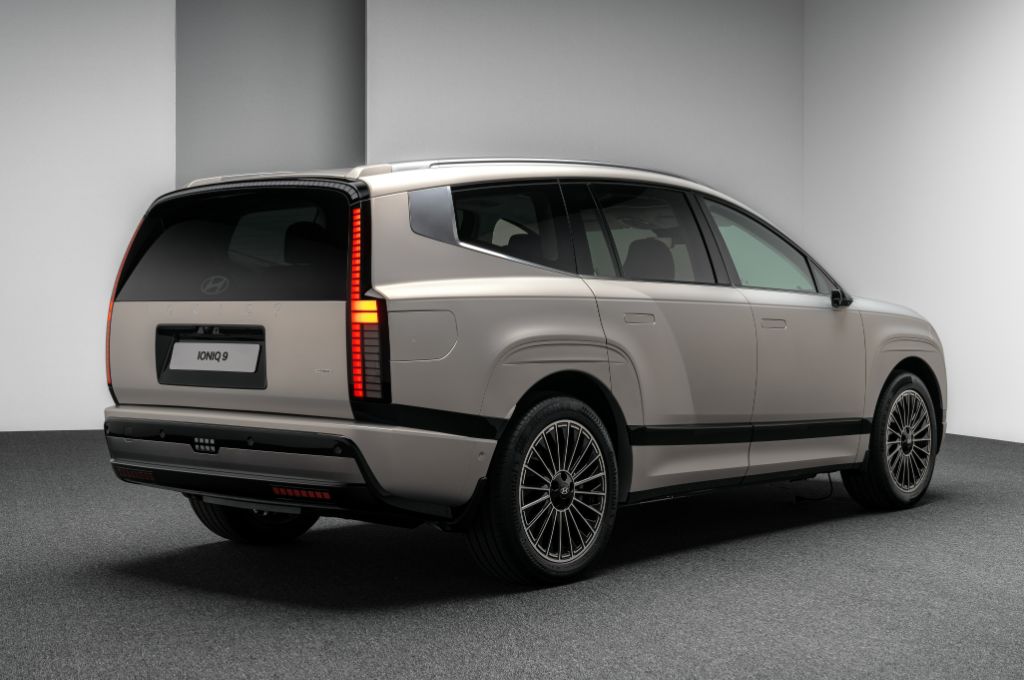
There are three powertrains on offer, including rear-wheel drive or four-wheel drive models, all with a big 110kWh lithium-ion battery that’s good for a WLTP range of up to 385 miles.
It’s a spacious, all-electric family SUV aimed at those who need serious practicality without sacrificing modern tech and design.
Range, battery and charging
The IONIQ 9 is powered by Hyundai’s largest battery yet: a 110.3 kWh pack. This gives the single-motor RWD version a WLTP-estimated range of 385 miles, slightly edging out the Kia EV9 (349 miles) and holding its own against the BMW iX (380 miles). The dual-motor AWD variant focuses more on performance, so its range will likely drop to around 330 miles.
Charging is competitive, with Hyundai claiming a 10-80% recharge in just 24 minutes using a 350 kW DC fast charger. That’s on par with rivals like the Volvo EX90 and Kia EV9. However, the IONIQ 9 adds Hyundai’s clever vehicle-to-load charging (V2L) system, letting you power appliances or devices directly from the car’s battery. Whether it’s charging your phone, powering your next camping trip, or running your coffee maker on the go, this feature adds real-world versatility. Unlike the Kia EV9, however, there are no current plans to include Vehicle-to-Grid (V2G) technology, which could allow the car’s battery to support the electrical grid.
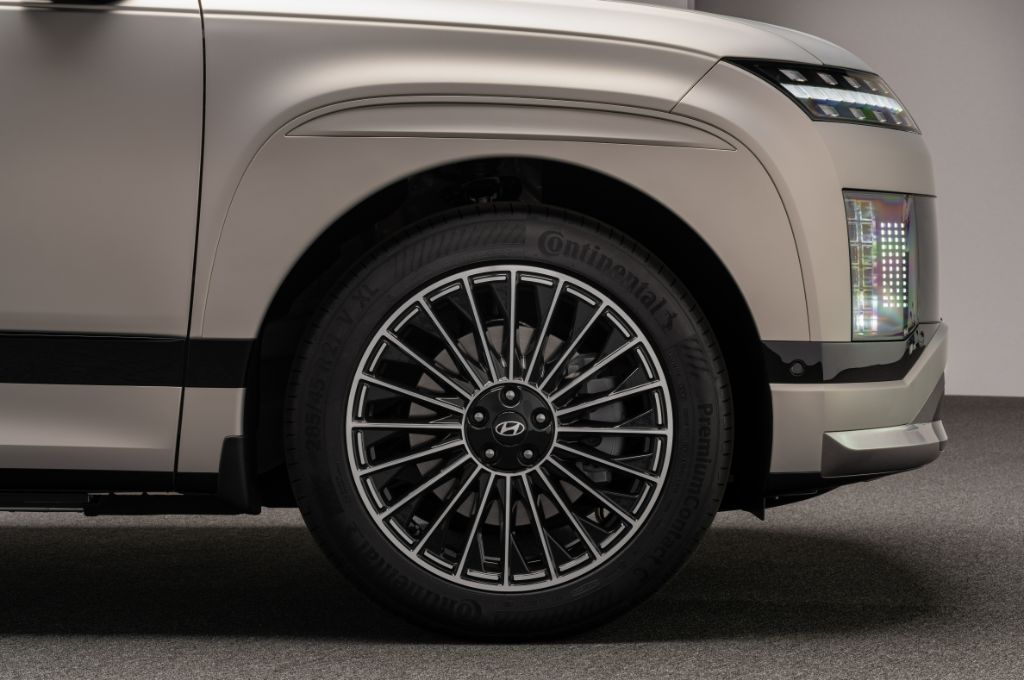
Practicality and Boot Space
Hyundai has prioritised interior space in the IONIQ 9, which you can see in all its glory in my full walkaround video. The car’s 3,130 mm wheelbase—its longest ever—creates a roomy cabin with flexible seating for six or seven passengers. A flat floor adds to the sense of openness, while second-row seats can swivel to face the third row when stationary, turning the car into a social space. Hyundai calls this a “Universal Island,” a feature designed to maximise comfort and functionality, especially during charging stops or family outings.
Boot space is generous. It's tricky to precisely compare the IONIQ 9's boot size with its rivals, as Hyundai hasn't yet published luggage capacity figures using the European measurement standards. Suffice to say that we expect it to be close to the Kia EV9, which gets over 300 litres of space behind the third row, and close to 1500 with all of the seats folded. There’s also a front trunk (frunk), which is handy for smaller items. This is definitely one of the most practical electric cars you can buy; I'll tell you that right now, official figures or not. The IONIQ 9 also tows up to 2,500kg, making it one of the most capable electric tow cars.
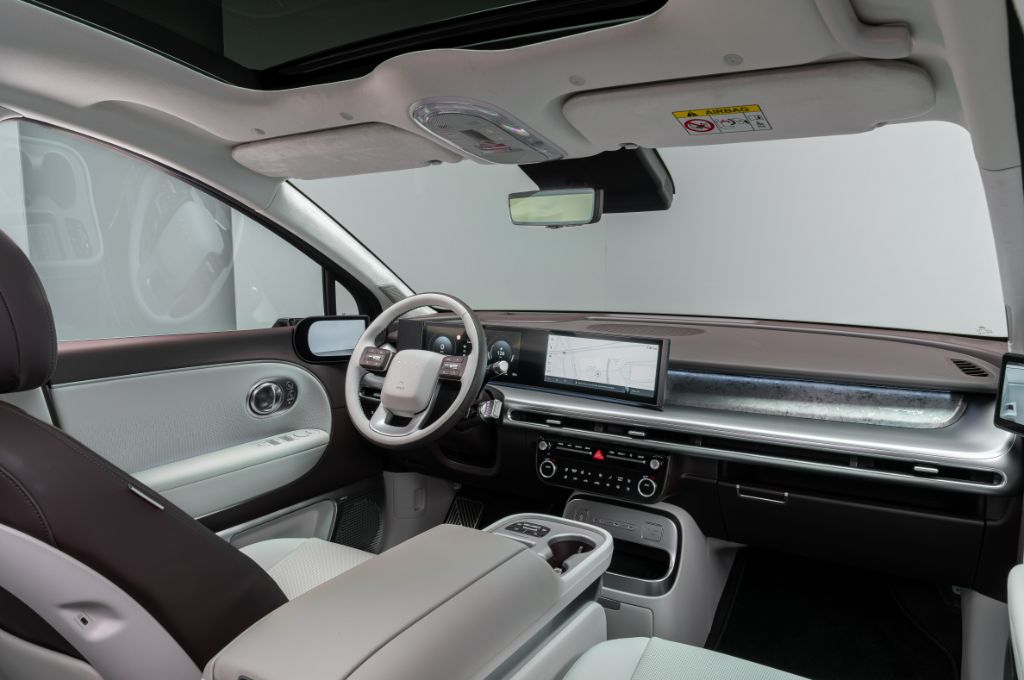
Interior, Design/Styling and Technology
The interior is where it starts to vary from the concept quite dramatically, which, if you remember, had an ‘L’-shaped sofa to lounge around on! It also had a mini built-in fridge, an incense holder, and even a shoe sanitiser to freshen up passengers’ footwear on the move. It doesn’t get any of that. But it does get a lot of space.
The front of the IONIQ 9 is deliberately not too long to give more space to the interior. The flat floor, clean lines, and panoramic curved display create an open, modern feel. Hyundai has borrowed ideas from furniture design, with seats and surfaces inspired by the proportions of a sofa. Materials are eco-friendly, including recycled fabrics and alternatives to leather, which add to the car’s sustainability credentials.
The Universal Island 2.0 sliding console is a standout feature. It can be moved back by up to 190 mm, giving second-row passengers easy access to storage and controls. This console includes 5.6 litres of storage in the upper tray and 12.6 litres in the bottom tray, making it practical for families who need to carry lots of small items and it’s a great place to store your snacks! The first and second-row seats recline fully and come with leg rests, making them ideal for long journeys or breaks during charging stops and there’s also a massage function on top-of-the-range models.
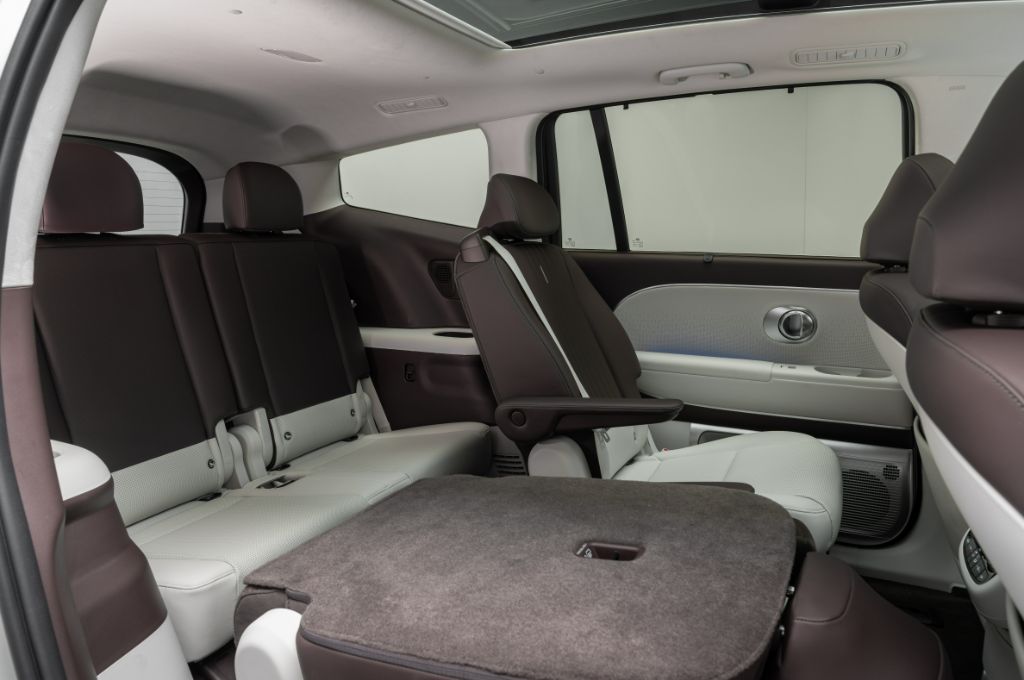
The IONIQ 9 takes its design cues from Hyundai’s SEVEN concept, though it’s been toned down for practicality. I spoke to Hyundai’s head of design, SsangYup Lee, about the SEVEN concept when it launched, and he told me it was a ‘serious concept,’ meaning the production car would look similar. And he’s been true to his word.
Gone are the concept’s rear-hinged clamshell doors, but the overall shape—sleek, modern, and aerodynamic—remains. The long roofline slopes gently toward the rear, while flush panels and a smooth front end help achieve a low drag coefficient of 0.259, which is competitive for a large SUV.
You don’t get the squared-off wheel arches of the concept—rounded ones are better for aerodynamics. Instead, you get cladding that gives it a squared-off look via a slight optical illusion. Hyundai’s signature “Parametric Pixel” lighting gives the IONIQ 9 a distinctive look, tying it visually to the rest of the IONIQ lineup. Wheel options range from 19-inch base models to 21-inch Calligraphy wheels, inspired by aircraft turbines. Around the back, the design hints at a boat tail, with sharp edges and muscular shoulders that add presence on the road. The side profile has echoes of the first-generation Audi A2, particularly in the roofline, blending style with aerodynamic efficiency.
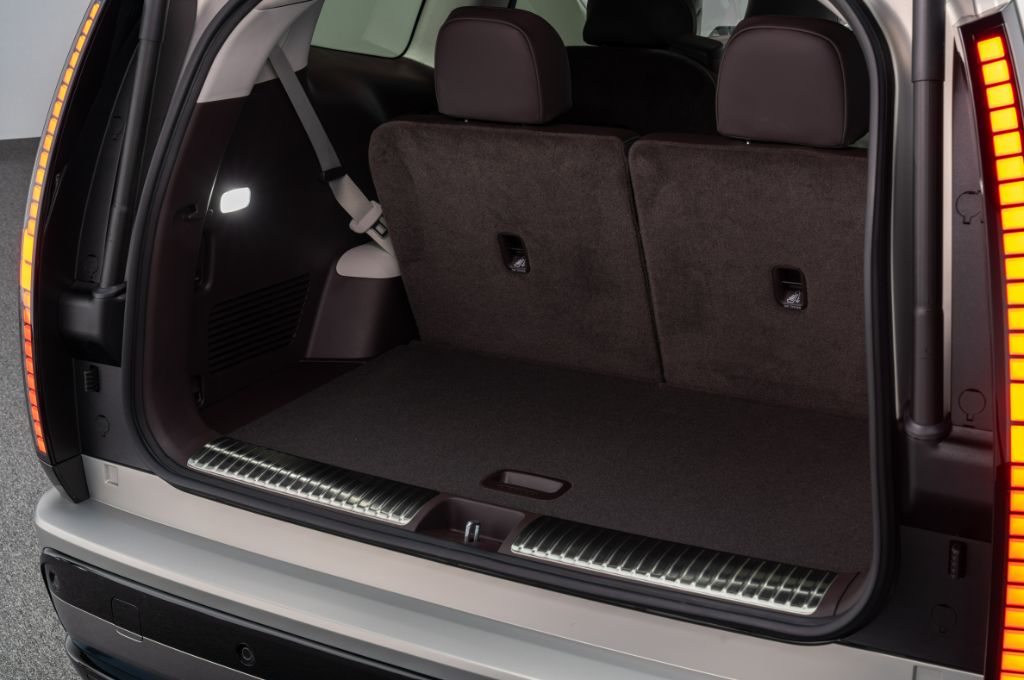
Motors, Performance and Handling
The IONIQ 9 is offered with three powertrain options. The single-motor RWD version delivers 215bhp, with a 0-62 mph time of 9.4 seconds. The Long Range AWD variant boosts power to 308bhp, cutting the sprint to 6.7 seconds. For those who want more punch, the Performance AWD model delivers 429bhp, hitting 62 mph in 5.2 seconds. That’s on par with competitors like the BMW iX xDrive50, though it doesn’t aim to be as sporty. The IONIQ 9 also offers an iAuto Terrain Mode, which uses AI to adapt the car's settings for different road conditions.
Sitting in the driver’s seat, you get a really great view down the road and even pretty decent visibility to the back of the car despite it’s size. It’s also very smooth and comfortable to drive, and feels surprisingly light in terms of its steering and the way it goes round corners. The Long Range AWD prototype model that I drove out in Vegas takes just 4.1 seconds to do 50 - 75mph takes 4.1sec, so mid-range punch and overtaking ability isn’t a problem.
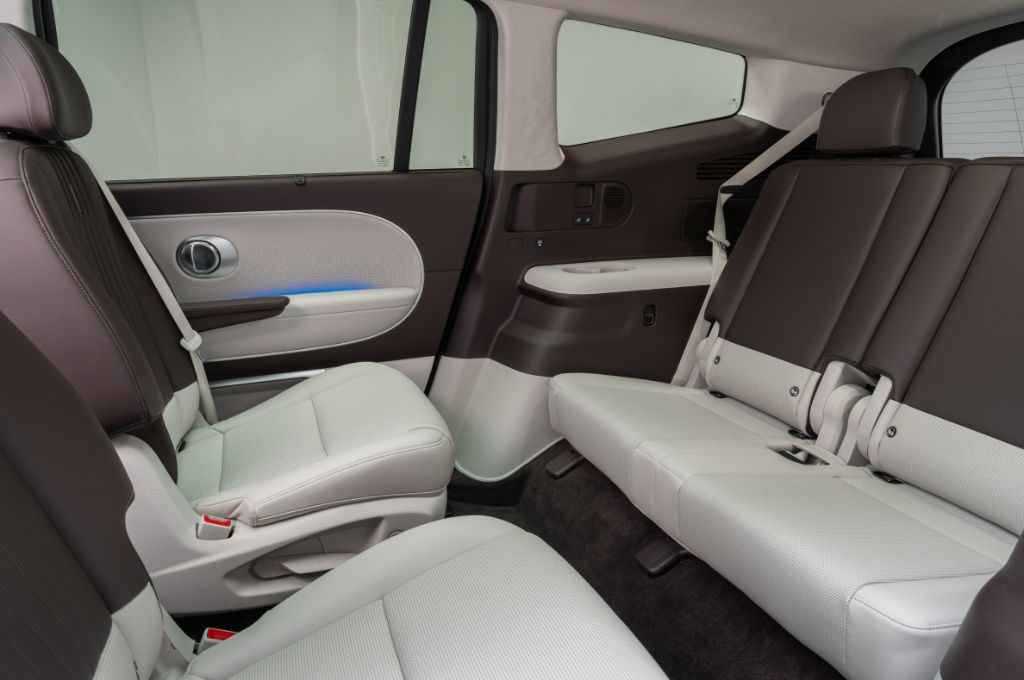
Yes, you’re aware that the IONIQ 9 is a big, heavy car, but the multilink suspension and the self-levelling air suspension keep the body from leaning too much, while also keeping thumps and vibrations to a minimum.
Running costs and pricing
The IONIQ 9 is packed with tech aimed at making life easier for drivers and passengers. The dashboard features a panoramic curved display with a 12-inch driver’s cluster and a 12-inch infotainment screen. Hyundai’s Features on Demand (FoD) system lets you buy upgrades after purchasing the car, like dynamic lighting patterns or streaming apps such as Amazon Music. There’s also an AI-powered voice assistant for controlling various in-car features.
Safety is well-covered with ten airbags, including airbags for third-row passengers, and seatbelt pre-tensioners for all rows. Advanced Driver Assistance Systems (ADAS) include Forward Collision-Avoidance Assist, Lane Keeping Assist, and Blind-Spot Monitoring, features that match the safety tech offered by rivals like the Volvo EX90.
Price haven't been confirmed yet, but it's safe to expect the IONIQ 9 to cost around £65,000 to £80,000 when it does on sale in the UK in 2025.
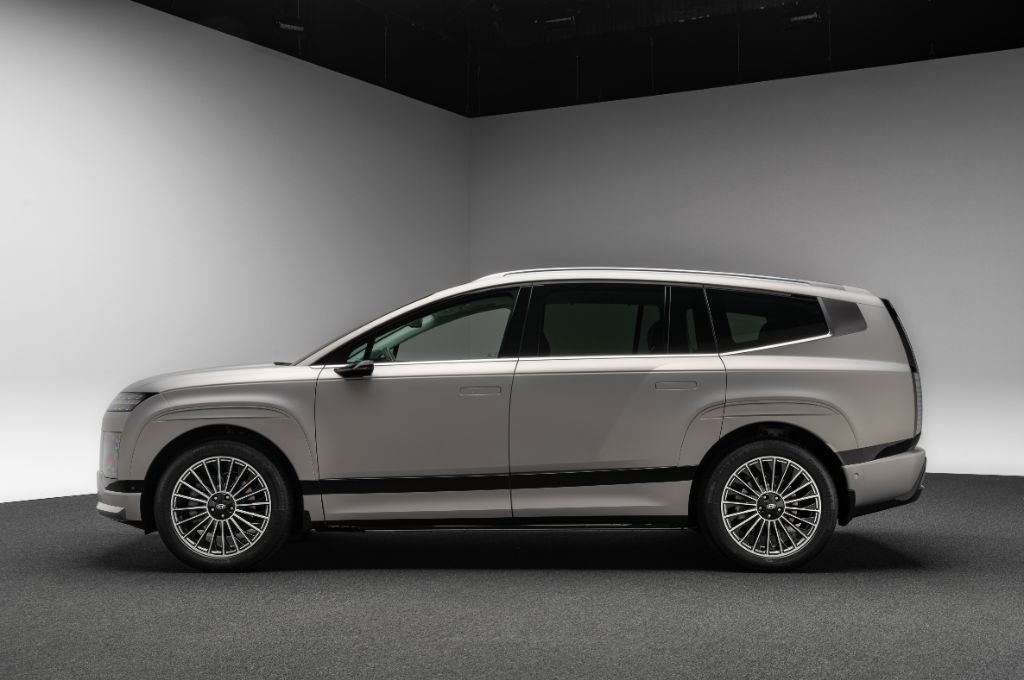
Verdict
There’s a lot of pressure on the IONIQ 9. The IONIQ 5 and IONIQ 6 are both winners of the World Car of the Year award, so can the IONIQ 9 make it a hat trick? On this first look, I think it’s in with a good chance. Of course, we don’t yet know the all-important pricing - I suspect it will be in-line with the EV9 when it goes on sale in May 2025. That would suggest a starting price of £65,000, going up to just under £80,000, which is usefully less than the Volvo and the BMW iX. With its thoughtful design, practical interior and competitive pricing, the IONIQ 9 is well-positioned to take on its key rivals, and we’ll be driving it soon so make sure you subscribe to our newsletter so that you’ll be the first to know when we do.









































